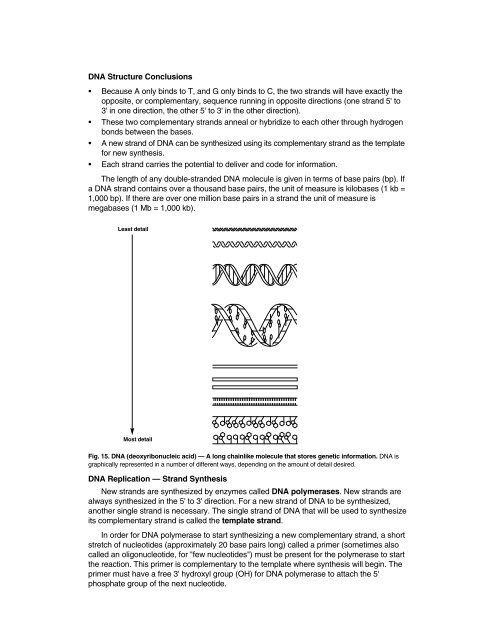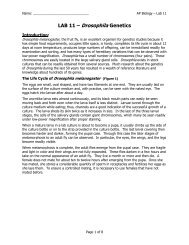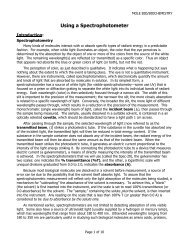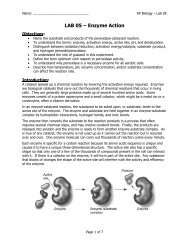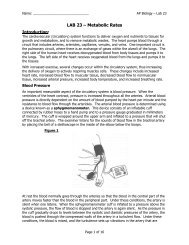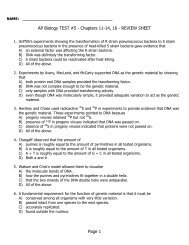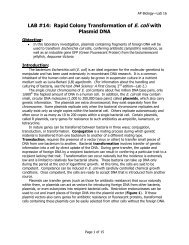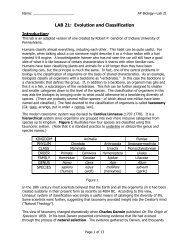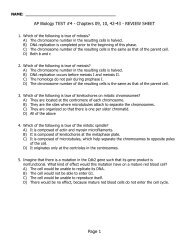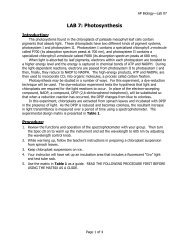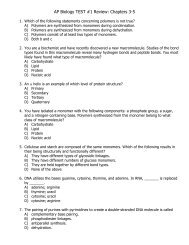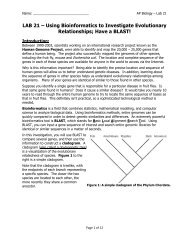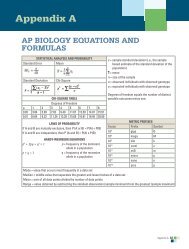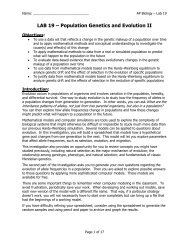Crime Scene Investigator PCR Basics⢠Kit
Crime Scene Investigator PCR Basics⢠Kit
Crime Scene Investigator PCR Basics⢠Kit
You also want an ePaper? Increase the reach of your titles
YUMPU automatically turns print PDFs into web optimized ePapers that Google loves.
DNA Structure Conclusions<br />
• Because A only binds to T, and G only binds to C, the two strands will have exactly the<br />
opposite, or complementary, sequence running in opposite directions (one strand 5' to<br />
3' in one direction, the other 5' to 3' in the other direction).<br />
• These two complementary strands anneal or hybridize to each other through hydrogen<br />
bonds between the bases.<br />
• A new strand of DNA can be synthesized using its complementary strand as the template<br />
for new synthesis.<br />
• Each strand carries the potential to deliver and code for information.<br />
The length of any double-stranded DNA molecule is given in terms of base pairs (bp). If<br />
a DNA strand contains over a thousand base pairs, the unit of measure is kilobases (1 kb =<br />
1,000 bp). If there are over one million base pairs in a strand the unit of measure is<br />
megabases (1 Mb = 1,000 kb).<br />
Least detail<br />
Most detail<br />
Fig. 15. DNA (deoxyribonucleic acid) — A long chainlike molecule that stores genetic information. DNA is<br />
graphically represented in a number of different ways, depending on the amount of detail desired.<br />
DNA Replication — Strand Synthesis<br />
New strands are synthesized by enzymes called DNA polymerases. New strands are<br />
always synthesized in the 5' to 3' direction. For a new strand of DNA to be synthesized,<br />
another single strand is necessary. The single strand of DNA that will be used to synthesize<br />
its complementary strand is called the template strand.<br />
In order for DNA polymerase to start synthesizing a new complementary strand, a short<br />
stretch of nucleotides (approximately 20 base pairs long) called a primer (sometimes also<br />
called an oligonucleotide, for "few nucleotides") must be present for the polymerase to start<br />
the reaction. This primer is complementary to the template where synthesis will begin. The<br />
primer must have a free 3' hydroxyl group (OH) for DNA polymerase to attach the 5'<br />
phosphate group of the next nucleotide.<br />
51


